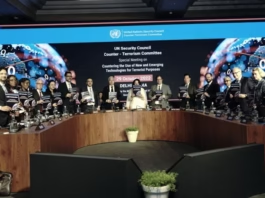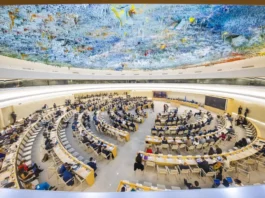An Overview of Ongoing Global Conflicts
The complex landscape of global conflicts features numerous active situations, with the conflicts in Ukraine and Gaza standing out for their significance and international implications. These conflicts are rooted in deep-seated historical tensions, geopolitical ambitions, and the pursuit of national identity. In Ukraine, the ongoing conflict, which began in 2014 with Russia’s annexation of Crimea, has evolved into a significant war involving numerous actors, including NATO allies and international organizations. Russia’s aggressive military actions have not only destabilized Ukraine but have also heightened global security concerns. The situation is further complicated by historical grievances, ethnic divisions, and the struggle for regional influence.
Similarly, the ongoing conflict in Gaza, characterized by its humanitarian crises and violent clashes, reveals the longstanding Israeli-Palestinian tensions that date back decades. Military operations, retaliatory strikes, and systemic blockades have rendered life for civilians perilous, with international law consistently challenged. The ramifications of this unrest extend beyond the immediate region, affecting global diplomatic relations and raising urgent questions of human rights and humanitarian response. The shifting power dynamics within the Middle East, influenced by regional players and external powers, add an additional layer of complexity to the struggle for peace.
The implications of these conflicts on world politics are profound. Each situation influences the international community’s response to crises and shapes foreign policy decisions. Major world leaders’ roles are critical; their perspectives on military intervention, sanctions, and negotiations can either contribute to conflict resolution or exacerbate tensions. Understanding the nuances of Ukraine and Gaza is essential for comprehending the broader context of global conflicts and the potential pathways toward peace. This understanding not only informs policy-making but also reflects on the collective moral responsibilities of nations in support of human rights and international stability.
The Role of Leadership in Conflict Resolution
Leadership plays a crucial role in shaping the landscape of global conflicts, particularly through the actions and decisions of influential figures like Donald Trump. His presidency marked a distinctive approach to international diplomacy, characterized by a mix of assertive negotiation and unconventional tactics. Trump’s commitment to rapid conflict resolution often entailed a promise to engage directly with world leaders, a stance that was both praised and criticized. His willingness to break from traditional diplomatic protocols highlighted a new era of negotiation that sought to address long-standing global issues in a more direct and often confrontational manner.
One notable aspect of Trump’s leadership style was his focus on bilateral agreements, which he believed would allow the United States to reclaim its negotiating power. This strategy was evident in his dealings with North Korea, where he engaged directly with Kim Jong-un in an attempt to denuclearize the Korean Peninsula. The implications of such direct engagement raised questions about the effectiveness of isolating adversaries through sanctions and whether a more personal approach could yield favorable outcomes. However, the outcomes of these high-stakes meetings often fluctuated, leaving the international community to grapple with uncertainty about future relations.
Moreover, Trump’s decision-making processes were influenced by his personality traits, including a penchant for hyperbole and a focus on maintaining a powerful image. These characteristics often led to significant shifts in foreign policy, creating an environment where allies and adversaries alike were left uncertain about America’s position on various global issues. This unpredictability not only complicated existing relationships but also had far-reaching implications on the geopolitical landscape as nations sought to navigate an era defined by unconventional leadership. Ultimately, the effectiveness of Trump’s approach to conflict resolution remains a topic of ongoing analysis and debate, reflecting the complex interplay between leadership and global diplomacy.
The Impact of International Relations on Local Conflicts
International relations play a significant role in shaping local conflicts, often dictating the course of hostilities and influencing the underlying dynamics between groups within a particular region. In the context of the Israel-Palestine conflict, the interplay of local and international politics is particularly pronounced. The decisions made by global powers, notably the United States, directly affect Israel’s military and diplomatic strategies, which in turn have far-reaching implications for the Palestinian territories.
The U.S. has historically provided strong support to Israel, which has arguably emboldened Israeli leadership to pursue certain policies regarding Palestine without significant fear of international repercussions. This support manifests not only in military aid but also in diplomatic backing in various international forums. As tensions escalate, especially in regions like Gaza, the consequences of such support become increasingly evident. For example, during periods of increased violent clashes, the Israeli government may feel inclined to maintain tough stances, relying on the assurance of U.S. backing to confront perceived threats.
This reinforcement of Israel’s position results in a cycle of hostilities that can destabilize regional equilibria. Neighboring nations often react to American support for Israel through their foreign policies, many of which are shaped by historical grievances, religious affiliations, and geopolitical interests. These dynamics can lead to heightened tensions not just within Israeli and Palestinian societies but across the broader Middle Eastern landscape. As alliances are formed and broken based on international relations, the potential for local conflicts to escalate into larger, regional crises increases.
Consequently, the actions of global powers have profound implications not only for local conflicts like that between Israel and Palestine but also for the balance of power in the region as a whole. The constant interplay of support and opposition among nations continues to complicate any prospects for resolution, emphasizing the need for a nuanced understanding of international influences on local struggles.
Looking to the Future: Prospects for Peace and Stability
The future of global conflicts, particularly in volatile regions such as Ukraine and Gaza, presents a complex scenario shaped by historical patterns and theoretical frameworks. As tensions continue to simmer in these areas, the prospect of peace or additional conflict will depend heavily on diplomatic efforts, leadership dynamics, and international cooperation. Historical case studies often indicate that effective negotiation and compromise have the potential to yield sustainable solutions, although these elements are frequently undermined by entrenched positions and regional rivalries.
In the context of Ukraine, the potential for a diplomatic resolution hinges on the willingness of global powers to engage meaningfully with all stakeholders involved. This type of engagement requires not only mediator roles to broker peace but also genuine interest in addressing the underlying grievances that fuel the conflict. Similarly, in Gaza, the long-standing issues surrounding territorial claims and security must be considered within broader geopolitical contexts, especially the influence of neighboring nations. Without a robust framework promoting dialogue, the cycle of violence may continue, impeding lasting stability.
Moreover, the role of global governance cannot be overstated. Institutions like the United Nations are tasked with fostering an environment conducive to peace; however, their effectiveness often depends on the support of member states. Collaborative approaches that emphasize shared goals—such as combating climate change, addressing economic disparities, and improving human rights—can foster a sense of community among nations, potentially leading to greater overall stability. Furthermore, recognizing that global challenges are interlinked is essential for developing strategies that promote peace and resilience in conflict-prone areas.
As we look to the future, it is evident that the path to peace is fraught with challenges, yet it is achievable through innovative leadership and a commitment to cooperative solutions. Civil society will also play a crucial role in advocating for peaceful resolutions and holding leaders accountable. Through concerted efforts, the hope remains that the global community can navigate these turbulent waters effectively, steering towards a more peaceful coexistence.




